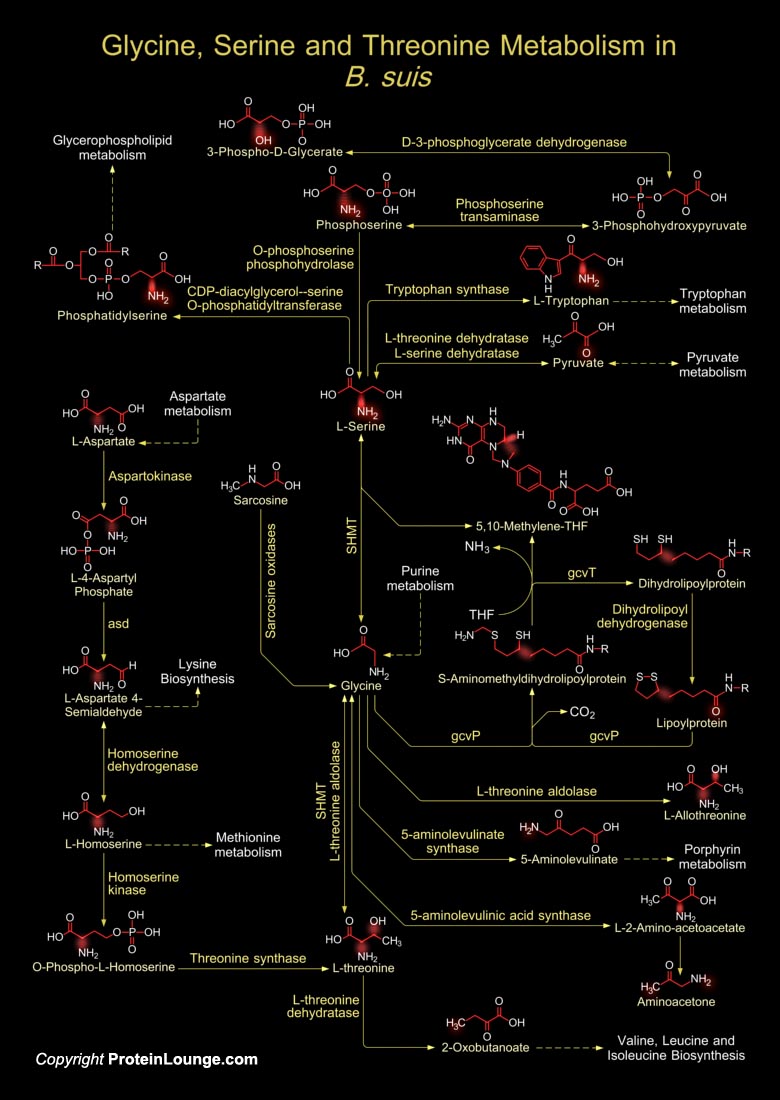
Species in the genus Brucella are the etiological agents of Brucellosis, a zoonotic disease endemic in many areas of the world, characterized by chronic infections in animals leading to abortion and infertility, and a systemic, febrile illness in humans. Brucella is facultative intracellular pathogens that enter the host through mucosal surfaces and are able to survive inside macrophages. B. suis (Brucella suis) is the first Gram-negative pathogenic organism weaponized as a potential bioterrorism agent (Ref.1). The presence of S-LPS (Smooth Lipopolysaccharide) is an important virulence factor of these organisms. The role of the O-side chain or O-antigen of S-LPS in the survival of Brucella has not been clearly defined; however it might provide a protective mechanism in[..]
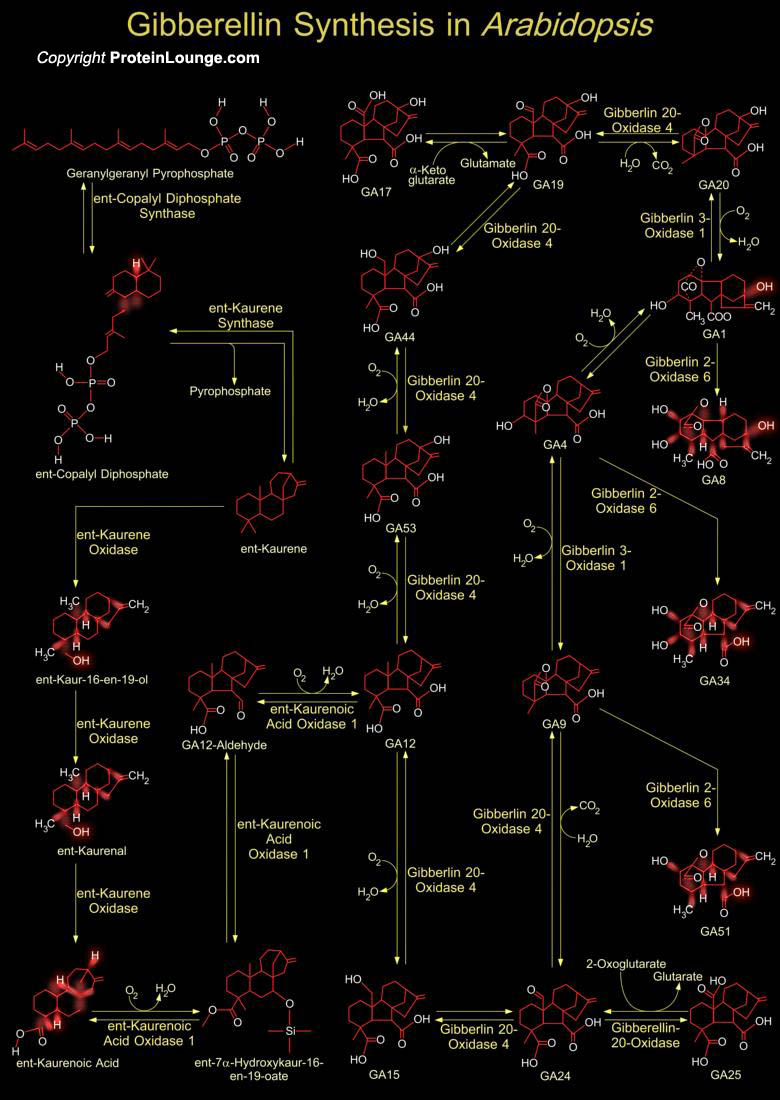
The GAs (Gibberellic Acids or Gibberellins) phytohormones play important roles in plant growth and development, promoting seed germination, elongation growth and reproductive development. GA is important for processes including seed germination, stem growth, and flower and fruit development. Gibberellins are modified in the endoplasmic reticulum and cytosol until they reach their biologically-active form. The gibberellins are named GA1 through GAn in order of discovery. Gibberellic acid, which was the first gibberellin to be structurally characterized, is GA3. There are currently 136 GAs identified from plants, fungi and bacteria.GAs is widespread and so far ubiquitous in flowering (Angiosperms) and non-flowering (Gymnosperms) plants as well as ferns. GA mediates[..]
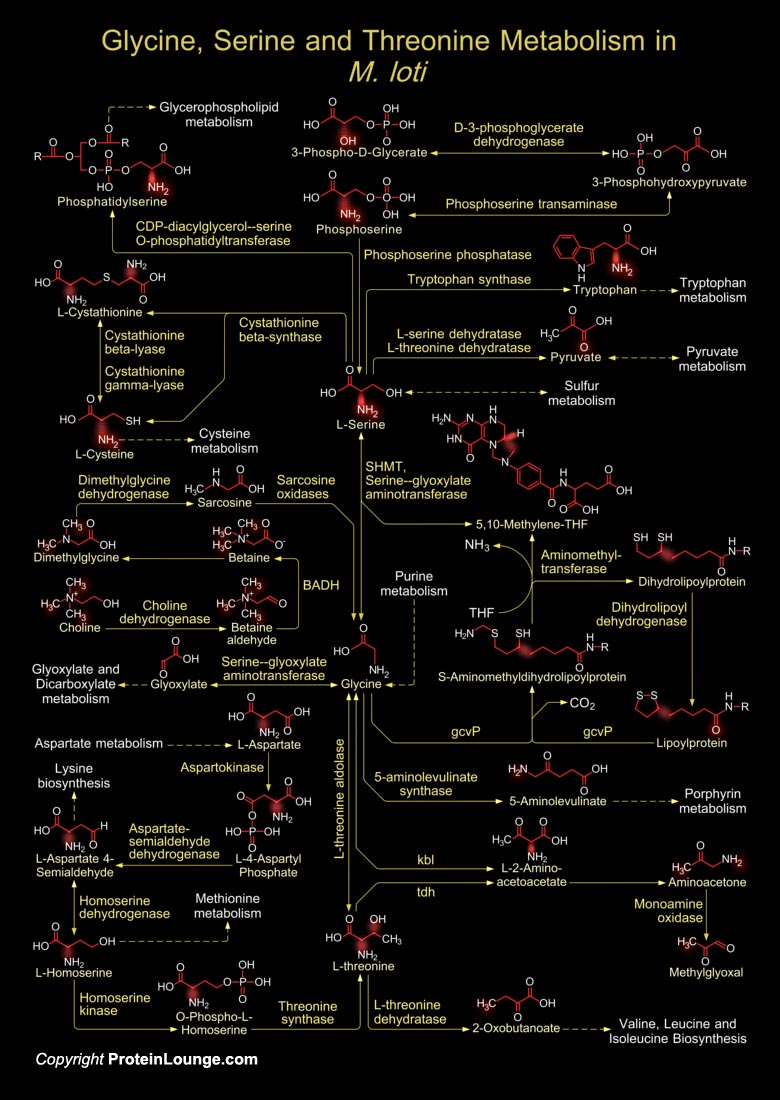
Rhizobium, Bradyrhizobium, Mesorhizobium, Sinorhizobium, and Azorhizobium-collectively known as rhizobia, are Gram-negative, nitrogen-fixing bacteria of agronomic importance because they perform nitrogen-fixing symbioses with leguminous plants (soybean, alfalfa, beans, peas, etc). The metabolism of amino acids like Glycine is indispensable for functioning of one-carbon metabolism and for the establishment of a fully effective, nitrogen-fixing root nodule symbiosis in M. loti (Mesorhizobium loti). Glycine acts as a source of other vital amino acids like L-Serine and L-Threonine. It also contributes to the one-carbon pool, to formation of Glutathione, to Purine nucleotides, and to Porphyrins. Purine Metabolism may also form a source of Glycine. Direct routes of Glycine[..]
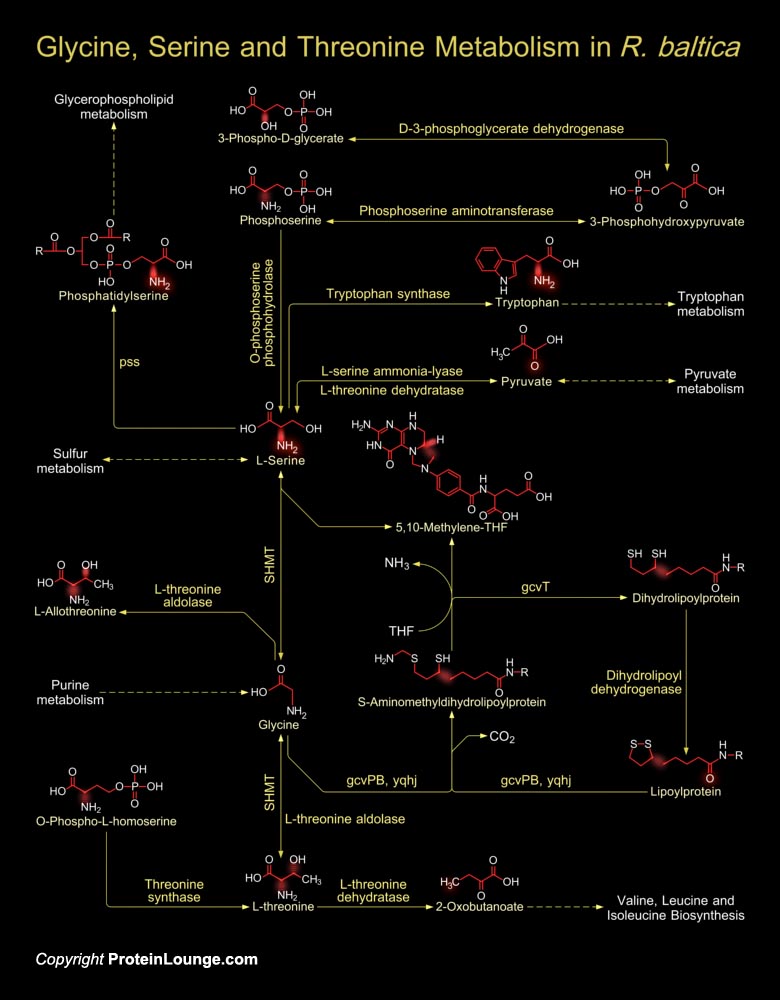
R. baltica (Rhodopirellula baltica) is a marine, aerobic, heterotrophic representative of the globally distributed and environmentally important bacterial order Planctomycetales. They catalyze important transformations in global carbon and nitrogen cycles. From a phylogenetic perspective the order Planctomycetales forms an independent, monophyletic phylum of the domain Bacteria. These are thought to be the deepest branching bacterial phylum. Planctomycetes are unique in many other respects. Their cell walls do not contain peptidoglycan, the main structural polymer of most members of the domain Bacteria. They show a unique cell compartmentalization in which a single membrane separates a peripheral ribosome-free paryphoplasm from the inner riboplasm (pirellulosome).[..]
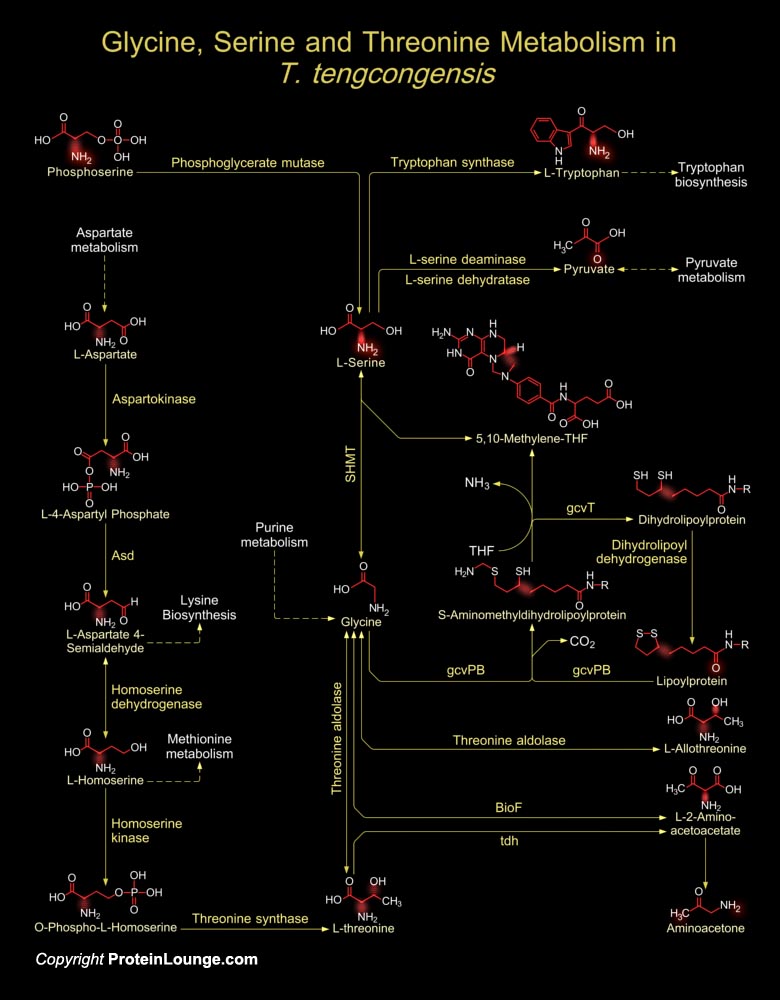
T. tengcongensis (Thermoanaerobacter tengcongensis) is a rod-shaped, Gram-negative, anaerobic eubacterium that metabolizes sugars as the principal source of energy and carbon source, and gains energy anaerobically by Sulfur respiration. T. tengcongensis has a complete collection of genes involved in most of the amino acid biosynthetic pathways for Threonine, Valine, Leucine, Histidine, Phenylalanine/Tyrosine, Tryptophan, Arginine and Methionine. However, it lacks a few key genes such as Threonine Dehydratase for Isoleucine biosynthesis and Ornithine Cyclodeaminase for Proline biosynthesis. For nucleotide metabolism, it also has a complete set of genes for Purine biosynthesis, Purine salvage, and Pyrimidine biosynthesis pathways (Ref.1). In the direction of L-Threonine[..]
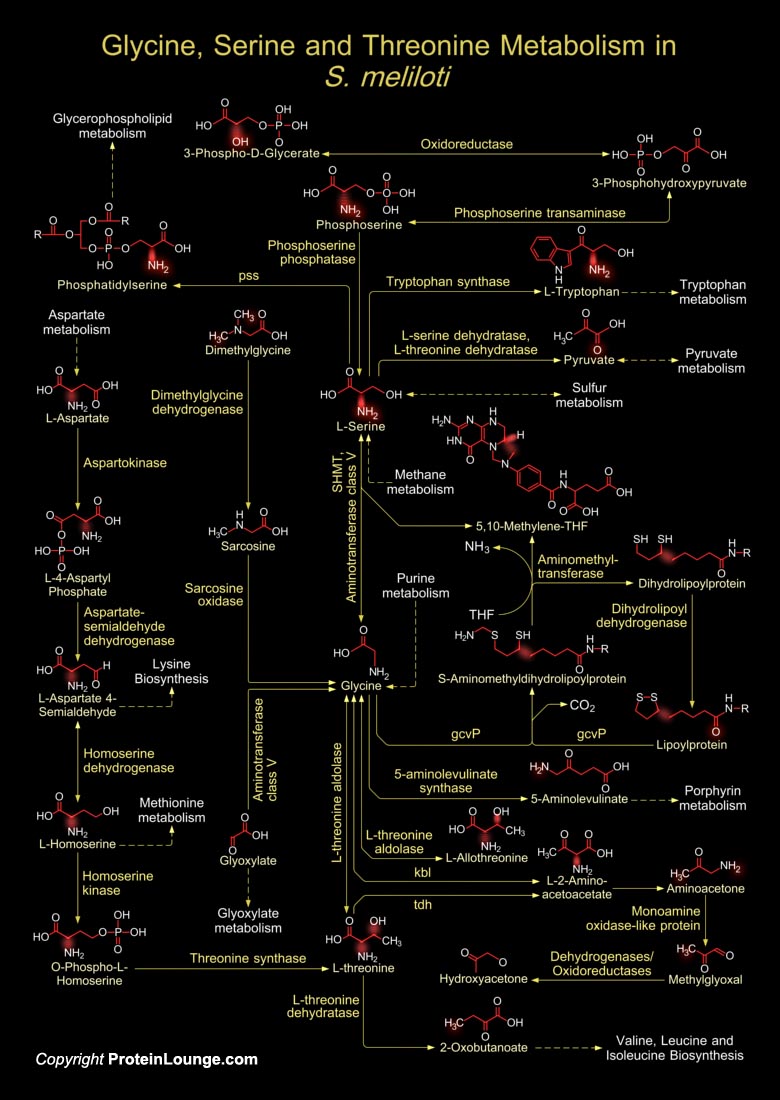
One of the most interesting and perhaps best-studied plant bacterial interactions is between rhizobial species and economically important leguminous plants (soybean, alfalfa, beans, peas, etc.). Rhizobia are generally described as root-nodule-forming nitrogen-fixing symbionts belonging to one of five species, Rhizobium, Bradyrhizobium, Sinorhizobium, Azorhizobium, and Mesorhizobium. The S. meliloti (Sinorhizobium meliloti) genome consists of a circular chromosome and two large circular elements (mega plasmids), one of which is essential for growth and Quorum-sensing (Ref.1 & 2). In this Gram-negative bacterium the metabolism of amino acids like Glycine is indispensable for functioning of one-carbon metabolism and for the establishment of a fully effective,[..]
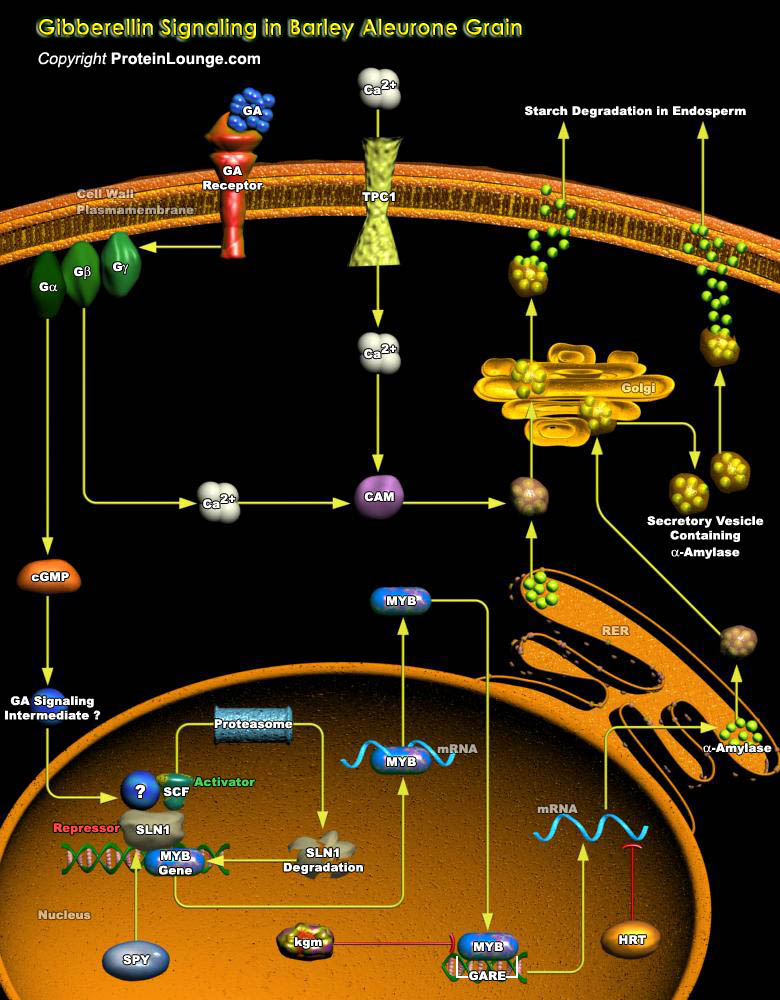
GAs (Gibberellins) are members of a large family of Diterpenoid compounds, which are essential for a number of processes, including Gene Expression in Cereal Aleurones, Seed Germination, Elongation, Growth, and Flowering. During the last four decades, Barley Aleurone has been a valuable system for studying GA regulation of gene expression. After germination, GAs are released from the Embryo into the Endosperm, triggering the expression of a number of genes encoding Hydrolytic enzymes in Aleurone cells. Many of these Hydrolytic enzymes, which include Alpha-Amylase, Proteases, and Cell Wall–degrading enzymes, are secreted and are responsible for digestion of the stored reserves in the starchy endosperm. The Signal transduction events leading from the Receptor to[..]
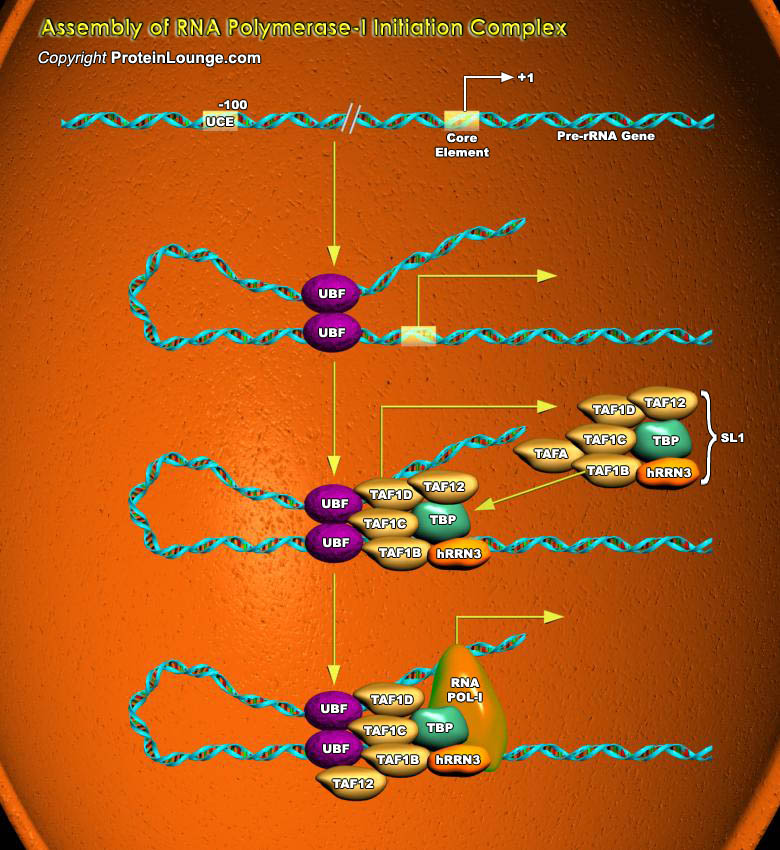
The nuclei of all eukaryotic cells contain three different RNA Polymerases, designated I, II and III. Like the DNA polymerase that catalyzes DNA replication, RNA Polymerases catalyze the formation of the phosphodiester bonds that link the nucleotides together to form a linear chain. The RNA polymerase moves stepwise along the DNA, unwinding the DNA helix just ahead of the active site for polymerization to expose a new region of the template strand for complementary base-pairing. In this way, the growing RNA chain is extended by one nucleotide at a time in the 5’-to-3’ direction. The substrates are nucleoside triphosphates (ATP, CTP, UTP, and GTP); as for DNA replication, a hydrolysis of high-energy bonds provides the energy needed to drive the reaction[..]
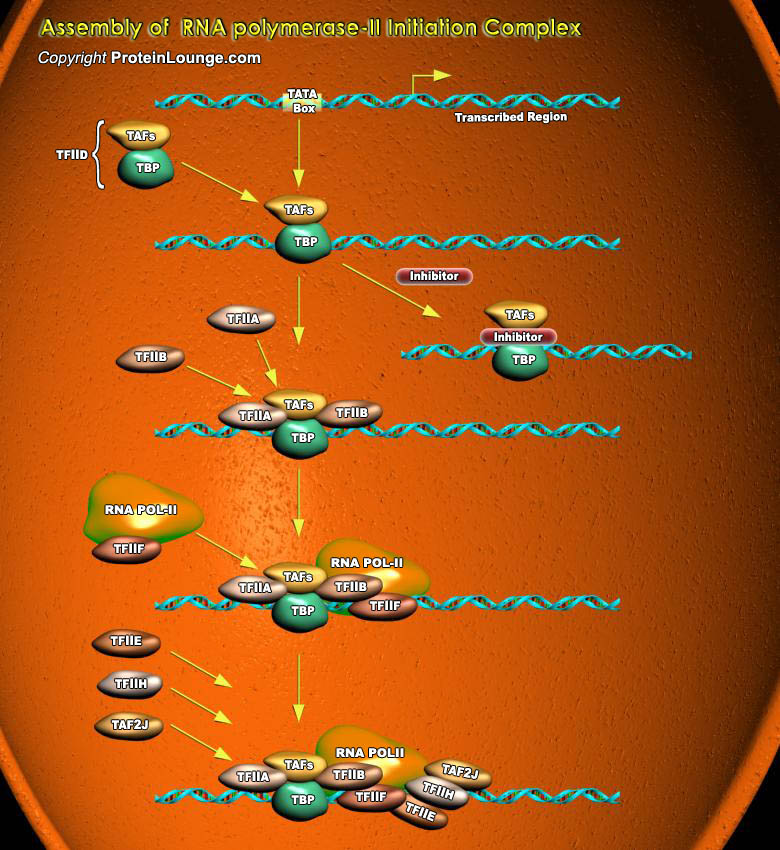
The nuclei of all eukaryotic cells contain three different RNA Polymerases, designated I, II and III. Like the DNA Polymerase that catalyzes DNA replication, RNA Polymerases catalyze the formation of the phosphodiester bonds that link the nucleotides together to form a linear chain. Each eukaryotic RNA Polymerase catalyzes transcription of genes encoding different classes of RNA. RNA Polymerase-II catalyzes transcription of all protein-coding genes; that is, it functions in production of mRNAs. RNA Polymerase-II also produces four snRNAs (small nuclear RNAs) that take part in RNA splicing.The eukaryotic polymerases do not directly recognize their core promoter sequences. The first step in complex formation at a promoter containing a TATA Box is binding of the factor[..]
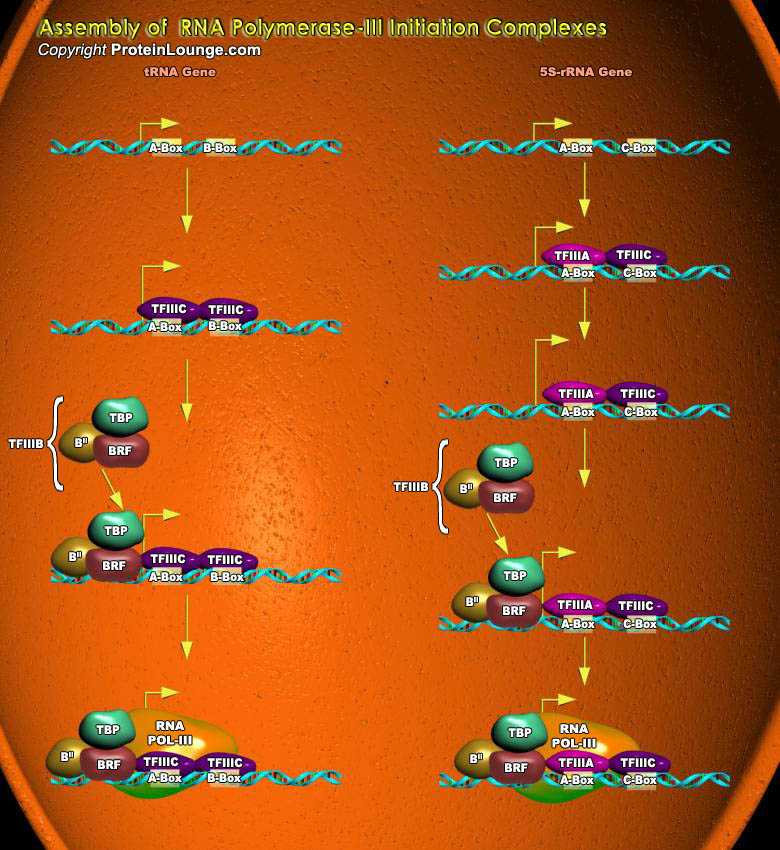
The nuclei of all eukaryotic cells contain three different RNA Polymerases, designated I, II and III. Like the DNA Polymerase that catalyzes DNA replication, RNA Polymerases catalyze the formation of the phosphodiester bonds that link the nucleotides together to form a linear chain. Each eukaryotic RNA Polymerase catalyzes transcription of genes encoding different classes of RNA. Transcription by RNA Polymerase-III produces small, stable RNAs including tRNAs, the 5S rRNA associated with the large ribosomal subunit, one of the snRNA (small nuclear RNAs) required for pre-mRNA splicing, and the 7S RNA associated with the signal recognition particle involved in secretion of proteins and the insertion of membrane-spanning proteins into cellular membranes. The func¬tions[..]
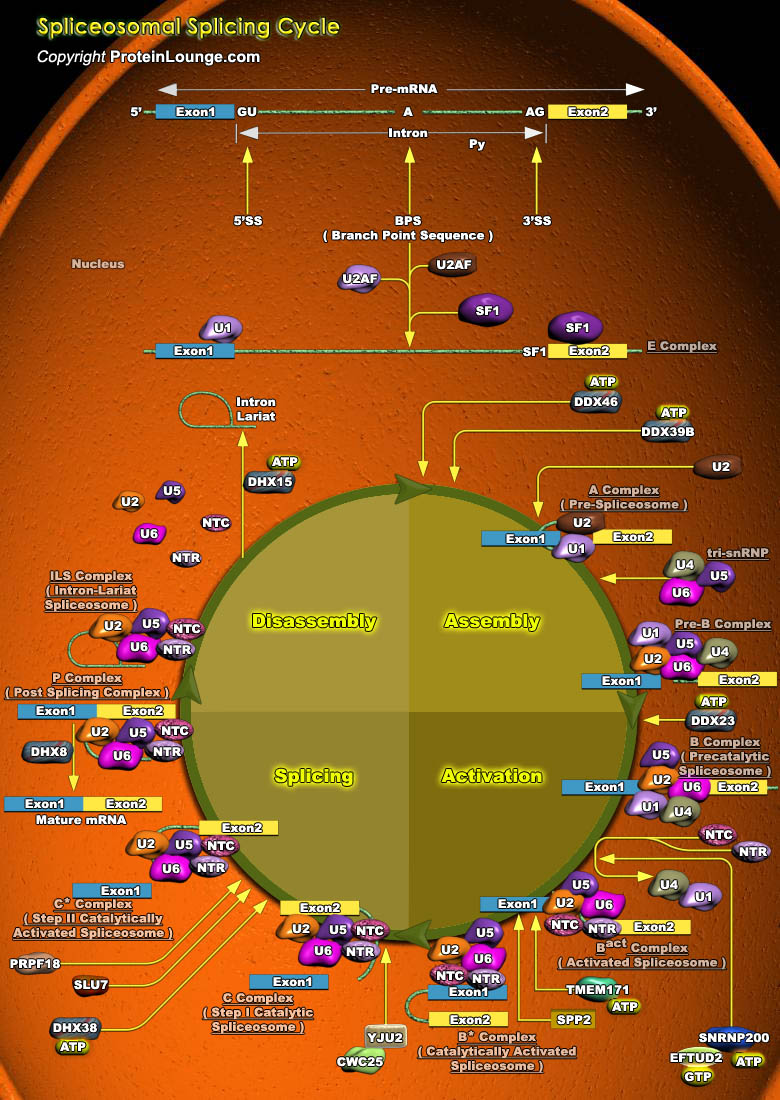
Splicing of pre-mRNA (pre-mRNA) is a complex mechanism where introns are removed, and exons are joined together to form a mature mRNA competent for translation. Pre-mRNA splicing is tightly regulated and its failure is linked to various tumors, pathologies of the endocrine system and neurodegenerative disorders. The discovery that introns are removed during splicing came from electron microscopy of RNA-DNA hybrids between adenovirus DNA and the mRNA encoding Hexon, a major virion capsid protein. For short transcription units, RNA splicing usually follows cleavage and polyadenylation of the 3’ end of the primary transcript. But for long transcription units containing multiple exons, splicing of exons in the nascent RNA usually begins before transcription of the[..]
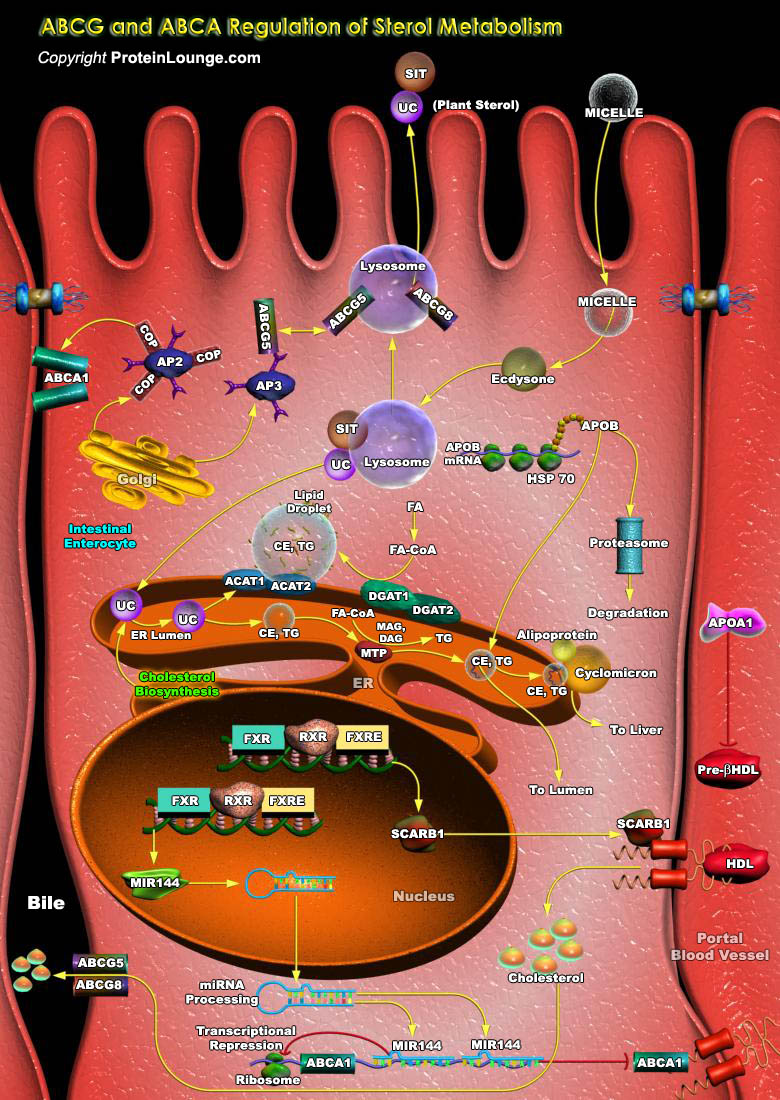
ATP Binding Cassette transporters comprise a large family of membrane-spanning proteins that are responsible for transporting a variety of substrates in prokaryotes and eukaryotes. The most intriguing and, arguably, the most important membrane proteins for this purpose are the ABC (ATP-Binding Cassette) transporters. These proteins, found in all species, use the energy of ATP hydrolysis to translocate specific substrates across cellular membranes. Many of these transporters are responsible for the translocation of lipophilic substrates such as phospholipids, bile acids, and sterols (Ref.1 & 2).Beta-Sitosterol and other plant sterols are directly transported back to the gut lumen by the heterodimeric ABCG5-ABCG8 complex by means of a sort of kickback mechanism, which[..]

